The Plants That Are Illegal To Grow, But Perfectly Fine To Forage
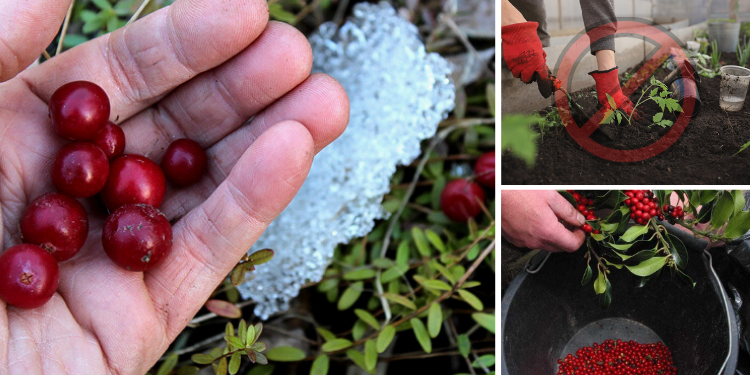
by APRIL K.
Though it is illegal to grow certain plants in some states, it does not mean that you cannot forage them. Discover eight plants you can use if you chance on them in an area that prohibits them.
The Ribes genus includes gooseberry, black currant, white currant, and red currant. The species is illegal in several states or counties because it behaves as a stand-in host for White Pine Blister Rust (WPBR). The fungus destroyed white pine forests in the northeastern parts of the United States in the early 1900s, killed trees, and threatened the economies that depended on them.
Gooseberry (Ribes hirtellum), Black Currant (Ribes nigrum), Red, and White Currant (Ribes rubrum)
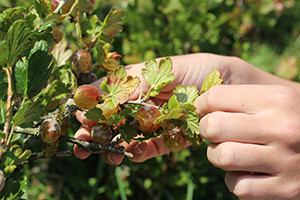 The Ribes species offers various fruits and flowers. They grow near streams and in meadows throughout the northern hemisphere and further south into the mountainous areas of South America. The hardy gooseberry thrives in cool, humid climates, and black currants grow in Vermont, Oregon, Connecticut, and New York.
The Ribes species offers various fruits and flowers. They grow near streams and in meadows throughout the northern hemisphere and further south into the mountainous areas of South America. The hardy gooseberry thrives in cool, humid climates, and black currants grow in Vermont, Oregon, Connecticut, and New York.
The low-maintenance red, white, and black currants mature well in most soil types, partial shade, sun, and colder conditions. These deciduous shrubs are native to western and coastal North America. You can find them in central British Columbia all the way south to central California. Washington State produces the currants commercially.
Where Is it Illegal to Grow the Ribes Species?
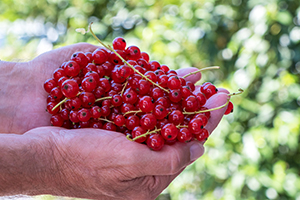 It is illegal to plant gooseberries and black currants in Maine, New Hampshire, Virginia, West Virginia, Ohio, and North Carolina. Rhode Island, New Jersey, Massachusetts, and Delaware enforce a permit system for gooseberries.
It is illegal to plant gooseberries and black currants in Maine, New Hampshire, Virginia, West Virginia, Ohio, and North Carolina. Rhode Island, New Jersey, Massachusetts, and Delaware enforce a permit system for gooseberries.
If you want to learn more about foods you can forage for, here you will find all you need to know about the superweeds that saved large communities during the Great Depression.
Should you find a plant in New York or Connecticut, you can gather around 12 pounds from a single plant and return for more next year.
Delaware, Massachusetts, Michigan, and Rhode Island have also banned black currants. You need a permit for New Jersey. New York prohibits non-immune WPBR Nigrum, allows disease-resistant plants but prohibits the Ribes species in counties and townships in the Catskills and Adirondacks. Similar restrictions apply to red and white currants.
How to Harvest Currants
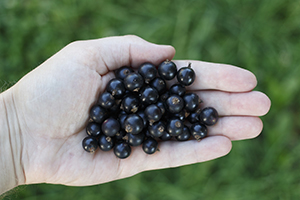 Harvest currants before they are fully ripe but when deeply colored, juicy, firm, but soft.
Harvest currants before they are fully ripe but when deeply colored, juicy, firm, but soft.
They usually ripen in June and July. Pick the red currant fruit clusters or strings rather than individual berries. Use them immediately or store them in the fridge or freezer short-term.
Be careful when you pick those soft gooseberries because the branches have thorns, so arm yourself with a container and heavy-duty leather gloves to prevent injuries. Grip the top of the gooseberry branch with one hand and drag along it to the end. Hold the container underneath with the other hand to catch the berries.
How to Use Them
Red and white currants taste tart but sweeter than black currants. You can use berries and currants to make delicious jams, compotes, and jellies by adding sugar and then boiling and straining them. Eat them raw, use them in salads or as garnishes, and create drinks or wines and syrups. Add them to fruit soups and salads, muffins, summer sorbets, puddings, or combine them with meringue or custard as pie and tart fillings.
Barberry
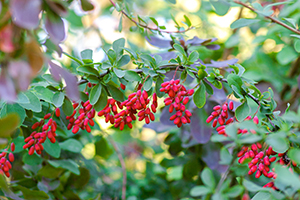 These plants grow in temperate, subtropical regions. The common barberry (Berberis vulgaris) grows in the south-eastern part of Minnesota and the Virginia mountains. They are not native to North America.
These plants grow in temperate, subtropical regions. The common barberry (Berberis vulgaris) grows in the south-eastern part of Minnesota and the Virginia mountains. They are not native to North America.
⇨ Click Here To Get The 10 Medicinal Plants You Need To Have In Your Backyard
Minnesota, Maine, and New York have banned seed-bearing plants that host black stem rust and cause small grain yield losses, including the European and American or Allegheny barberry native to eastern North America. Several areas outlaw the barberry species. The deer-resistant Japanese barberry (Berberis thunbergii) is invasive in 32 states and shelters ticks that carry Lyme disease. New York has approved the sale of sterile plants.
How to Harvest Barberries
Pick them individually to avoid the thorns. Grab onto a fruit-loaded branch near the bottom and scoop the berries off in bunches by pulling up toward the tip if you do not mind spikes.
How to Use Them
They taste like dried, unsweetened cranberries. Use the fruits and seeds but avoid the rest of the plant, which is poisonous but has medicinal properties. The sweet-flavored berries are tart and high in antioxidants. Eat them raw, make jam, use them to make tea, add them sparingly to salads, vegetables, granola, braises, and juice them. Plump them in hot water before putting them in stuffing, grain, and rice dishes.
Wild Sugarcane (Saccharum officinarum)
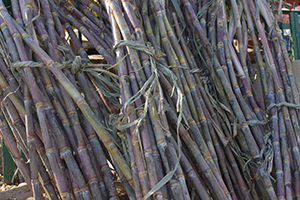 Wild sugarcane grows in Hawaii, Puerto Rico, and from Florida to Texas. This tropical and subtropical grass species can reach 20 feet and resembles bamboo-like corn.
Wild sugarcane grows in Hawaii, Puerto Rico, and from Florida to Texas. This tropical and subtropical grass species can reach 20 feet and resembles bamboo-like corn.
It grows spontaneously, produces sugar in its leaves through photosynthesis, and stores it in its stalks as a sweet juice.
Wild sugarcane grows successfully in Georgia and other southern states. The USDA classifies it as a noxious weed. It is highly regulated in Massachusetts, Florida, South Carolina and quarantined in Oregon and California. Vermont, Alabama, and Minnesota prohibit it.
How to Harvest Sugarcane
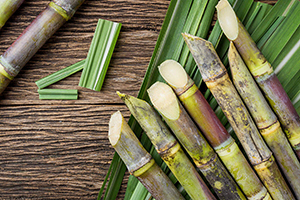 Sugarcane is usually ready for harvest in the fall. Cut the stems close to the ground with a large, sharp cutting blade or hatchet. Stack the shoots on top of each other in a wheelbarrow for transportation. Strip off excess leaves or other foliage as you only use the stalk. Cut the shoots into smaller pieces.
Sugarcane is usually ready for harvest in the fall. Cut the stems close to the ground with a large, sharp cutting blade or hatchet. Stack the shoots on top of each other in a wheelbarrow for transportation. Strip off excess leaves or other foliage as you only use the stalk. Cut the shoots into smaller pieces.
How to Use Them
The stem is edible though it contains little sugar. Chew it, swallow the sweet juice, and spit out the fiber for portable energy. Peel and crush the stems and boil them to make wine and syrup for dishes of all kinds.
Sycamore Maple (Acer pseudoplatanus)
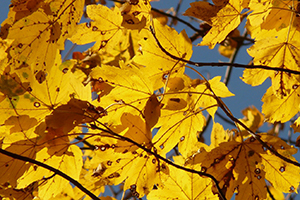 The imported tree can grow between 40 and 60 feet tall. Folks use it for landscaping in suburban and urban areas, and you will often find it growing in coastal communities. It prefers cool summer climates and does not grow well in the south-eastern regions below USDA Zone 7.
The imported tree can grow between 40 and 60 feet tall. Folks use it for landscaping in suburban and urban areas, and you will often find it growing in coastal communities. It prefers cool summer climates and does not grow well in the south-eastern regions below USDA Zone 7.
It produces winged seeds, develops crowded stands that out-shade and outcompete native plants, and harms the local ecology. Massachusetts, Connecticut, and the city of Portland, Oregon, currently ban cultivation.
⇒ What Happens If You Dry Willow Leaves
How to Harvest Sycamore Maple Sap
Tree sap starts running between mid-February and April when the daily temperature is mild, but it is still cold at night. You will need a container to collect the sap, a tube with a vent hole, something to make a hole in the tree – such as a cordless drill and a bit the size of the pipe.
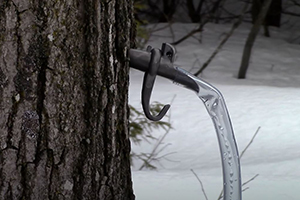 Remember a dowel to plug the hole after tapping the tree. Choose a healthy specimen about 40 years old with a trunk of 12 inches or more across. Trees standing in the open offer the best results. Make a hole through the bark layer with a sharp point a meter above the ground to assess if there is sap.
Remember a dowel to plug the hole after tapping the tree. Choose a healthy specimen about 40 years old with a trunk of 12 inches or more across. Trees standing in the open offer the best results. Make a hole through the bark layer with a sharp point a meter above the ground to assess if there is sap.
If a droplet forms, drill a 1.5-to-2.5-inch hole at a slightly upward angle and clear out the loose shavings. Insert one end of the tube into the hole and the other into the container when the drips flow freely. Taper the peg to fit the hole and stop the sap from leaking out when you have collected enough.
How to Use Them
The Sycamore maple’s close-grained, hard-wearing, creamy-white timber makes excellent joinery, wood flooring, furniture, kitchen utensils, musical instruments and provides good firewood. Use its sweet, drinkable sap to make alcoholic and non-alcoholic beverages such as beer, wine, or syrup, and eat the honey produced by the bees that collect its nectar.
Garlic Mustard (Alliaria petiolata)
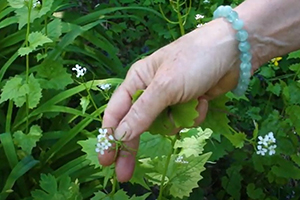 Folks imported garlic mustard for use as a culinary herb. It has natural enemies in its native Europe, but not in the eight US states that banned its deliberate cultivation. It interferes with butterfly reproduction. Insects and wildlife do not eat it, while some believe it overwhelms native plants to become the dominant species.
Folks imported garlic mustard for use as a culinary herb. It has natural enemies in its native Europe, but not in the eight US states that banned its deliberate cultivation. It interferes with butterfly reproduction. Insects and wildlife do not eat it, while some believe it overwhelms native plants to become the dominant species.
Minnesota, Massachusetts, Connecticut, and Alabama forbid the invasive biennial herb, and Washington State, Vermont, Oregon, and New Hampshire have banned it. You will find it in 30 midwestern and northeastern states, from Canada to South Carolina and Virginia, west to North Dakota, Kansas, and Nebraska, and as far as Utah and Colorado.
How to Harvest Garlic Mustard
Humans can eat these delicious, nutritious seeds, roots, leaves, and small, white flowers from the same family as cabbage, broccoli, and cauliflower. Harvest the plant during spring when the stems are succulent and thick, and the flower buds show at the top of the plant. Pick them when most are still closed, and only a few flowers are blooming.
How to Use Them
The young plants have a mild mustard-garlic flavor. Use the leaves in tuna and green salads, top egg salad, make pesto, or cook them to experience a more subtle taste. Older leaves taste stronger but are good in soup and dry rubs or marinades.
⇒ Buy Here Lavender Seeds And Other Seeds You Need To Start Your Medicinal Herb Garden
Duckweed (Lemna minor)
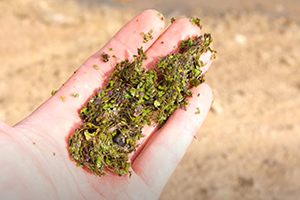 This native North American water plant with its tiny leaves is the smallest flowering plant in the world. It is valuable because of its high protein content. A plant consists of one flat, oval leaf or modified stem – about a quarter of an inch long – floating on the surface of still-moving water.
This native North American water plant with its tiny leaves is the smallest flowering plant in the world. It is valuable because of its high protein content. A plant consists of one flat, oval leaf or modified stem – about a quarter of an inch long – floating on the surface of still-moving water.
Its complete flower cluster consists of a miniature pistillate flower and two miniscule staminate flowers in a pouch-like sac. They attract bees, spiders, mites, and flies. Duckweed grows fast, provides food for fish and aquatic waterfowl and habitat for frogs and fish.
You will find them in all states except South Carolina and Hawaii. The USDA has classified duckweed as a noxious weed. Both Carolinas, Vermont, Oregon, Massachusetts, California, and Alabama prohibit its cultivation.
How to Harvest Duckweed
Use a rake to remove the plants from the water surface and gather the leaves.
How to Use Them
Utilize duckweed as fertilizer and livestock feed. Plants that grow in nutrient-rich water contain high concentrations of trace minerals, carotene, xanthophyll, vitamins A and B, fat, and sugar. They are a beneficial supplement for poultry, animals, and humans.
You cannot eat this great survival food raw as their needles will pierce your mucus membranes. Cook, boil, or roast the leaves and the roots to destroy the toxins and bacteria. The nutrients dissolve in the water, so drink the healthy brew. The flavor reminds of moldy spinach, so add onions, salt, and pepper or put it in soup and omelets. Make smoothies, pesto, or a puree with tastier ingredients.
Even banned plants are valuable as you can harvest and eat them. Some even taste good, and all those discussed have nutritional value to help you survive tough times. Why not pick and add them to the menu?
The Forager’s Guide to Wild Foods provides advice on how to harvest wild foods, how to recognize the best plants and herbs in your backyard, and how to employ tried-and-true foraging techniques to maximize the nutritional content of foraged foods. Dr. Nicole Apelian is an herbalist, biologist, survival skills educator, and mother who wrote The Forager’s Guide to Wild Foods. In a thorough foraging book, Dr. Apelian compiled her decades of research. These days, anyone can utilize the book to discover forging materials nearby.
Anyone can join.
Anyone can contribute.
Anyone can become informed about their world.
"United We Stand" Click Here To Create Your Personal Citizen Journalist Account Today, Be Sure To Invite Your Friends.
Humic & Fulvic Liquid Trace Mineral Complex
HerbAnomic’s Humic and Fulvic Liquid Trace Mineral Complex is a revolutionary New Humic and Fulvic Acid Complex designed to support your body at the cellular level. Our product has been thoroughly tested by an ISO/IEC Certified Lab for toxins and Heavy metals as well as for trace mineral content. We KNOW we have NO lead, arsenic, mercury, aluminum etc. in our Formula. This Humic & Fulvic Liquid Trace Mineral complex has high trace levels of naturally occurring Humic and Fulvic Acids as well as high trace levels of Zinc, Iron, Magnesium, Molybdenum, Potassium and more. There is a wide range of up to 70 trace minerals which occur naturally in our Complex at varying levels. We Choose to list the 8 substances which occur in higher trace levels on our supplement panel. We don’t claim a high number of minerals as other Humic and Fulvic Supplements do and leave you to guess which elements you’ll be getting. Order Your Humic Fulvic for Your Family by Clicking on this Link , or the Banner Below.
Our Formula is an exceptional value compared to other Humic Fulvic Minerals because...
It’s OXYGENATED
It Always Tests at 9.5+ pH
Preservative and Chemical Free
Allergen Free
Comes From a Pure, Unpolluted, Organic Source
Is an Excellent Source for Trace Minerals
Is From Whole, Prehisoric Plant Based Origin Material With Ionic Minerals and Constituents
Highly Conductive/Full of Extra Electrons
Is a Full Spectrum Complex
Our Humic and Fulvic Liquid Trace Mineral Complex has Minerals, Amino Acids, Poly Electrolytes, Phytochemicals, Polyphenols, Bioflavonoids and Trace Vitamins included with the Humic and Fulvic Acid. Our Source material is high in these constituents, where other manufacturers use inferior materials.
Try Our Humic and Fulvic Liquid Trace Mineral Complex today. Order Yours Today by Following This Link.




.jpg)


